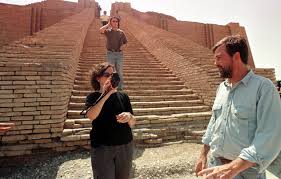Seniors Discover Archeological Tourism
 Archaeotourism or Archaeological tourism is a form of cultural/heritage tourism. Leisure travelers, this senior learned, represent 71% of the U.S. adult population, or approximately 170.4 million Americans.
Archaeotourism or Archaeological tourism is a form of cultural/heritage tourism. Leisure travelers, this senior learned, represent 71% of the U.S. adult population, or approximately 170.4 million Americans.
76% of all leisure travelers (129.6 million) can be defined as cultural/heritage travelers, having participated in cultural/heritage activities on their most recent trip or within the past three years.
Archaeological sites and historic places are major tourist attractions worldwide. In the last few years, visits to historical sites have ranked third, after dining in restaurants and shopping, among activities undertaken by visitors traveling abroad.
Archaeological tourism, or cultural/heritage tourism, has been defined as “travel designed to experience the places and activities that authentically represent the stories and people of the past. Cultural/Heritage tourism is a very big industry in the United States and worldwide and can include cultural, historic and natural resources.
Archaeological parks—prehistoric or historic sites preserved and interpreted for the public—have always been obvious tourism magnets for the communities in which they are located. Archaeological parks are one of the most important and impressive cultural riches in countries all over the globe.
Seniors Drawn to World Heritage Sites
Some of the most scientifically and historically important, aesthetically spectacular, and famous archaeological World Heritage Sites have seen a dramatic increase in numbers of visitors over recent decades. The major challenge in Archaeological tourism programs is ensuring that increased tourism does not destroy the very qualities that attract visitors in the first place.
The Archeological Institute of America notes that the popularity of archaeological sites as tourist attractions means that they are valuable sources of revenue, but unfortunately this is often not matched by reinvestment in proper management to ensure both protection of the site and continued enjoyment of it by tourists.
Archaeological sites are fragile resources and inadequate site management will result in deterioration or even destruction of the site and its related social, historical, educational, and economic potential. The number of people that visit archaeological sites rises every year and the increase in traffic can result in damage to sites. In extreme cases, sites have been closed to the public to prevent further damage.
This Guide may help you to become more informed about Archaeological tourism. The Archaeological Institute of America is North America’s oldest and largest archaeological organization. The Institute has nearly 250,000 members and subscribers in more than 100 local societies.
It was chartered in 1906 by Congress in recognition of its work in developing the Antiquities Act, a cornerstone in the preservation of archaeological sites in the U.S. Today. So, read up a bit, make some plans, and enjoy an experience that may be your “once in a lifetime” tour. -jeb



